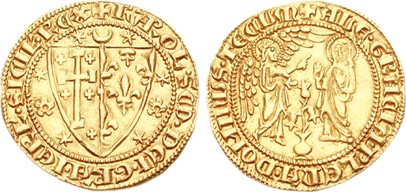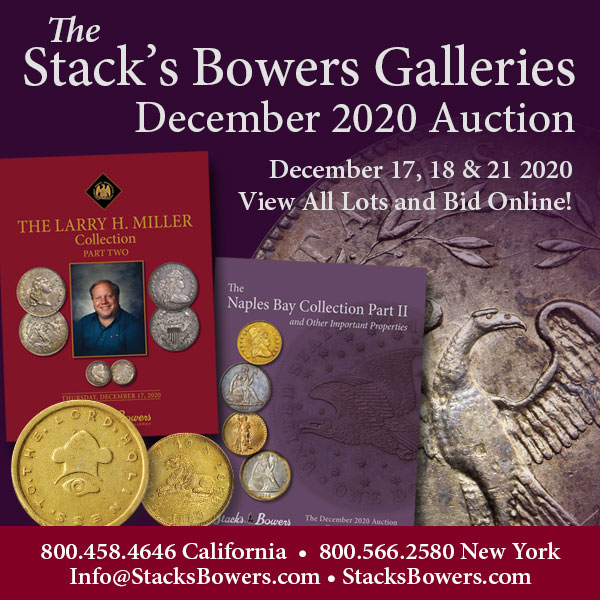
PREV ARTICLE
NEXT ARTICLE
FULL ISSUE
PREV FULL ISSUE
ADVENT COINS: A GAME OF THRONESDavid Pickup submitted this article which is the first of a planned series of four for the season of advent, featuring coins or tokens with a link in some ways to the Christmas story. This first one is about the annunciation. Thanks! -Editor Advent coins: A Game of Thrones

Attribution: Classical Numismatic Group, Inc. http://www.cngcoins.com Advent is a season of preparing and looking to the future. Sometimes people use advent calendars which count down the days to Christmas. Over the next few Sundays I thought we would prepare and look forward through the medium of collecting. I will start with an angel telling Mary she was going to have a baby. You can see the expression on her face and the insistence on the part of the angel. This is a beautiful coin, with vivid figures brilliantly portrayed. The design makes perfect use of the space. Even the arms on the other side are well drawn in a field of stars and a moon. These gold coins were issued by Charles I and his son Charles II of Anjou who was king of Naples and Sicily. The ones issued by his son are much rarer. They both also issued saluto d'argento which are silver coins with similar designs. The word salute means greeting in Italian and refers to the Angel's message to Mary which he begins by saying "Hail". The legend is AVE GRACIA PLENA DOMINUS TECUM which means Hail (you who are) full of grace, The Lord (is) with you. I like the angel's chubby hands and his finger pointing at Mary. Both figures have halos and Mary has her full attention at his words. There is a lily between them which is both a symbol of purity and of the French royal house. The arms on the other side are those of the house of Anjou with the heraldic fleur de lys and the arms of the kingdom of Jerusalem. The engraver was Giovanni Fortino, 1266–1278. Charles I 1226/1227 to 1285 was the founder of the second House of Anjou. He was also King of Sicily (1266–85) and Prince of Achaea (1278–85). In 1272, he was proclaimed King of Albania; and in 1277 he purchased a claim to the Kingdom of Jerusalem. Charles claimed the title of King of Jerusalem. He had purchased the claim from a lady called Mary of Antioch. Her mother was also Mary and she was married to John of Brienne, who had been King of Jerusalem. He seemed to collect titles as king in the way we collect coins! He certainly got around a bit. He went with the French King, Louis, during the Seventh Crusade to Egypt. He accepted the offer by the Pope to seize the Kingdom of Sicily from the Hohenstaufens. This kingdom included, in addition to the island of Sicily, southern Italy to north of Naples. As far as I know he did not go to Sicily or Jerusalem. Perhaps it was on his bucket list. His son, kept up the family tradition as King of Naples, Count of Provence and Forcalquier (1285–1309), Prince of Achaea (1285–1289), and Count of Anjou and Maine (1285–1290); he also styled himself King of Albania and claimed the Kingdom of Jerusalem from 1285. The gold coin is a beautiful example of the designer's art. Charles may have wanted to highlight his religious beliefs or boost his status. Others seemed to think the design was a good one. In 1419 King Charles VI issued a French version and then in 1420 his son in law, Henry V issued gold salutes in Normandy. His son Henry VI issued salutes at ten mints in Northern France. These later gold salutes have the two figures standing behind shields which come up to the figures' waists. The two shields side by side together symbolise the political ambitions of the English throne over France.

Wayne Homren, Editor The Numismatic Bibliomania Society is a non-profit organization promoting numismatic literature. See our web site at coinbooks.org. To submit items for publication in The E-Sylum, write to the Editor at this address: whomren@gmail.com To subscribe go to: https://my.binhost.com/lists/listinfo/esylum All Rights Reserved. NBS Home Page Contact the NBS webmaster 
|